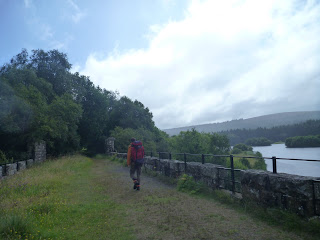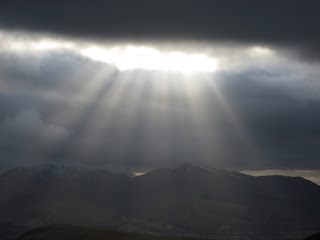I'm developing a project with the artist Duncan McAfee called Bothy Chorus. The idea is to create a piece of sonic art that uses the buildings and immediate environments of bothies as musical instruments in a composition. Duncan's piece will combine ambient recordings with new music performed live in the bothies and interviews with bothy users.
Bothies are simple buildings in the UK's remote mountain areas, maintained for free overnight use by anyone who needs shelter in the hills. Many are maintained by the excellent charity
http://www.mountainbothies.org.uk/ Originally used by farming families, shepherds or stalkers, bothies are now used in outdoor recreation by walkers, climbers, paddlers and cyclists. 'Bothying' has become a cultural phenomenon, and no wonder: with a roaring fire and a roof over your head, it's a spacious and sociable alternative to wild camping. How many other historic buildings can you stay in for nothing?
I've commissioned Duncan before for a project in Burnham Beeches and we've become friends. He's a really interesting artist, whose work often takes sonic forms:
http://www.duncanmcafee.org/
Duncan's Bothy Chorus will explore ideas of shelter and wilderness; luxury and survival. I hope that by sharing the mostly unheard sound worlds of a few choice bothies, we'll be able to communicate something of the value of these fragile resources, that help everyday people to access our beautiful outdoors. Duncan's piece will be shared as a sound installation to tour a few galleries, accompanied by a publication and CD.
We're waiting on the outcome of a couple of funding bids before we can start in earnest, but we manageed to fit in a little pre-project research around the bothies of Kielder Forest in Northumberland a few weeks ago.
The trip sort of started badly, with a dull trudge along a forest track ending in the discovery that the Bothy at Kielder Head was closed for the summer. Hmmm, that's a production error. A couple of hours from our start we were back at the car and heading for Roughside bothy on the other side of the massive Kielder Water reservoir.
This area feels very wild and remote, all along the England-Scotland border. The mountains are relatively untrod, boggy and flat-topped, and mostly carpeted in pine plantations. Footpaths, we soon discovered, can often exist only in the map-maker's imagination ...
So we fared a little better with Roughside, bothy number two of the trip, finding the place empty and setting about getting a fire going as night and rain started to fall. Then we got invaded by a group of teenage lads from Middlesbrough with a transistor radio and some very big knives. So much for our quiet night - but then I guess you never do know who you'll end up sharing a bothy with. They did share their beer with us, but conversation was awkward, and we ended up carrying out a lot of their rubbish the next morning.

The next day we set out for Wainhope bothy high above Kielder Water, walking up moutain bike tracks and forest roads in the absence of the footpath on the map. Wow - what a jewell Wainhope is. Set in a few acres of pasture holding back the forest, it's a beautiful two room bothy with an outbuilding for sawing and storing firewood. The water from the neighbouring streams is pretty brown with peat, but there's a route marked by posts up the hillside to a perfect mountain spring. I filtered the spring water just to be sure and it tasted absolutely gorgeous.
A forestry worker called Jacob turned up on his bike to liberate some food he'd stashed a day or so before, and we had a good chat about the bothy and the area. Thanks Jacob for telling me about the Kielder Marathon in October - I'm hoping to persuade a friend of mine to run it next year as part of a film we want to make about the science of running.
Noone else turned up, and we had the place to ourselves for the night. After dark, we went for a short wander and were treated to lots of shooting stars - although Duncan always seemed to be looking in the wrong direction ...
So it was third time lucky with our Kielder bothies, and we'll definitely come back to Wainhope if we get the funding for our Bothy Chorus project.
With special thanks to Paul Hearne, the MBA volunteer who looks after Wainhope so well.



























































